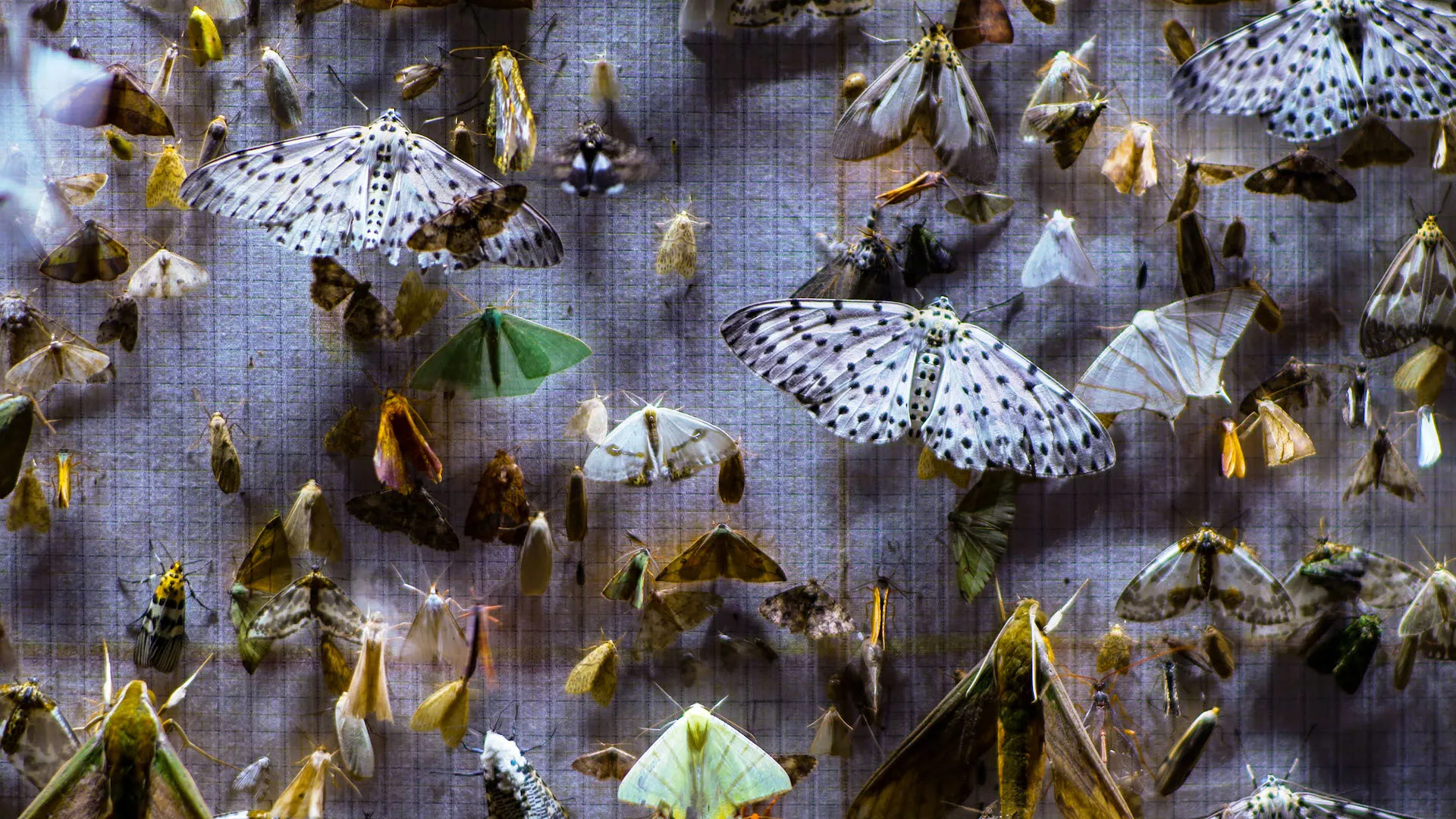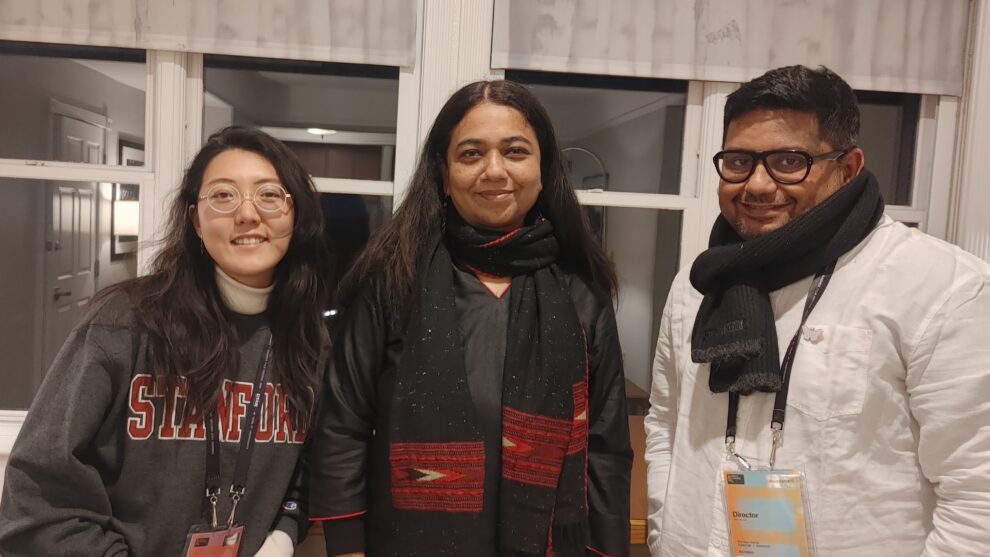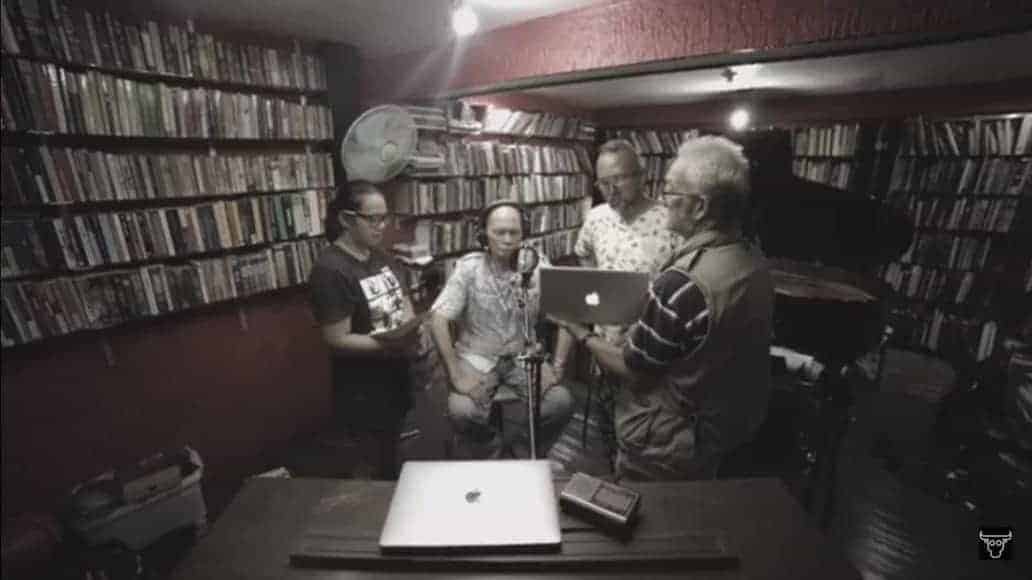From the Himalayas to the Rockies, “Nocturnes” flew from one mountain range to the next with its premiere at Sundance last month. The mesmerizing tone poem centers an unusual subject – moths – in the Eastern Himalayan forest, as seen through the eyes of researcher Mansi Mungee and Bicki, a temporary employee from the indigenous Bugun community. The duo returns time and time again to their silvery white moth screen, a reflective surface that attracts moths for study in the forest. The film delights in extreme close-ups of these winged friends, accompanied by their ambient sounds: the delicate flutter of wings, the gentle whisper of rain, the loving murmurs of Mansi as she studies them.
The sheer dexterity of the documentary was recognized at Sundance, winning the World Cinema Documentary Special Jury Award for Craft. For me, “Nocturnes” also seemed to resonate with two other Indian nature documentaries that had premiered at Sundance in the last few years: the Delhi-based, kite rescue brothers featured in Shaunak Sen's “All That Breathes” (2022), and Sarvnik Kaur's “Against the Tide” (2023). I brought this up to them when we spoke in Park City.
“Nocturnes” won the World Cinema Documentary Special Jury Award for Craft at Sundance 2024. Its world sales is managed by Dogwoof.
“We were at the same Asian Pitching Forum in Doclands, Kolkata,” co-director Anupama Srinivasan admitted. Co-director Anirban Dutta quipped, “But there's a strong difference between our films. Our film is a love letter to nature, to what we have lost, and is an invitation for people to connect back [with nature].” Srinivasan added, “Also, we are prioritizing the moths.”
At first, the duo worked on short, advocacy documentaries on snow leopard habitats in the western Himalayas for their “bread and butter.” There, at a small restaurant, they ran into their Mansi by chance.
“As she described what she does and this amazing forest, we were like, ‘Oh my God, this sounds so cinematic: putting up a white screen with the light and the moths making these patterns upon it – it is almost like a film projected,'” Srinivasan recounted in rapture. “So we made our way to the other end, away from the snow leopards and Delhi, to the Eastern Himalayas.”

The team returned to the Himalayas many times since they first visited in 2019, collecting footage, building community, and marveling at the moths. The conditions were temperamental, as much as the moths were ephemeral. The two recounted how they could only go in September through October, or April through May; otherwise, less-than-ideal weather conditions would make it difficult to travel with all their film equipment. Small meteorological details to even the moisture on the leaves would bare witness to certain moths, and others to never to be seen again. Some shots, including that of a wild Asian elephant, required weeks to capture.
“The whole film is about waiting, as Mansi says in the voiceover. You need to have that patience, to put in the effort night after night. Only then will you be rewarded,” Srinavasan said. “And this idea of seeing is very much dictated by sound,” Dutta added. “Because when you hear more, you see more – there's a correlation between the two.”
Indeed, capturing the moth's iconic flutter for “Nocturnes” turned out to be an extraordinarily complex process. The two highlighted the many microphones they had to use, including clipped microphones to the moth screens, unidirectional mono microphones, and stereo microphones. Dutta also had to fiddle around with the frequencies and with foley in post-production as well, to isolate and replicate certain noises.
“We lost track of how many times we've been working on a documentary over years,” Dutta noted. “What was more important to us, however, is the interpretation of reality, the interpretation of the world. We decided to film [“Nocturnes”] in a certain way to evoke a certain temporality – that is, the time of cinema. The story is just the starting point.”
“The core idea is attention,” Dutta underscored. “When you give enough time to look at something, you will discover more.”
Just as the documentary encourages slow looking, the two described how their attention towards the moth screen changed over time. Approaching the moth screen in the beginning was scary for Dutta, he admitted, but he felt his gaze changing with each closer look. Srinavan agreed, though her kneejerk reaction was that of wonder.
“I'm sure they were on my hair and coat or whatever, but I didn't even know since we were so absorbed at what the moths were doing, with all the texture [they produced] – when they flapped their wings or when they were still,” she said. “At first, you're going for the most beautiful moths. And then you get attracted to the liveliness of it – they're climbing over each other, pulling each other down. And sometimes, it's like a quiet night, with only two, three moths. So [the moth screen] is all blank. You learn to discover beauty in each one of these scenarios.”
As the two pointed out, honing attention is a process, and one that often requires collaboration. While Mansi and Bicki's project unfolds on the silver screen, I asked Srinivasan and Dutta to reflect upon their own partnership behind-the-camera. They said play to their strengths. While Srinivasan wrote proposals and edited in post-production, Dutta would invest in the film's sound design. What was most important to them, it seemed, was their trust in one another and their shared vision.
“The audience is a secondary question. The first thing is, are you honest with your process? Are you making the film that you want to make?” Dutta asked, philosophically. Srinivasan supplied, “I think it's our job as filmmakers to test your patience. We're coming from a world which is moving much faster, and [with the film], you are forced to slow down.”
As a final note, I asked if the two would go back to the Eastern Himalayas one day. Dutta said, “We are always sitting in Delhi, dreaming of going back to that location again. We want to have a continued relationship with that space.”
“I have two kids. I want to be hopeful,” Dutta continued. “I want to be positive and I want them to have a positive life. I don't want to make a film that says we are completely screwed and we have no future. For us, it is very important to have that positivity going. This is a film about hope.”
















